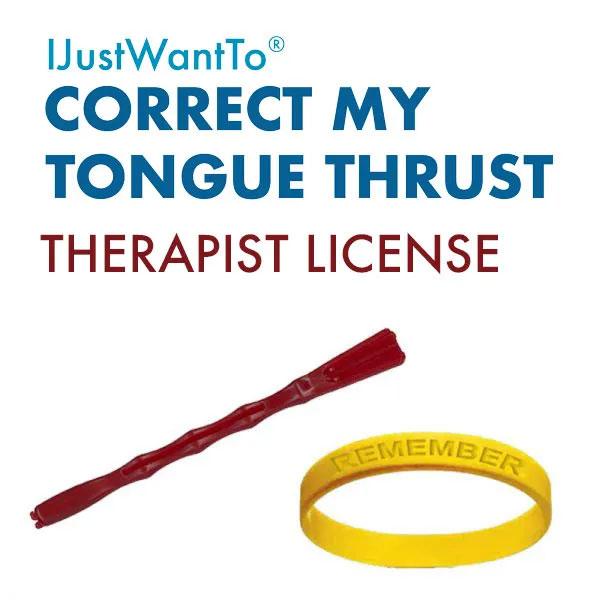Tongue thrust is a condition that often goes unnoticed or is misunderstood as a simple childhood habit that kids will outgrow. However, if left unaddressed, it can present a series of challenges, affecting a child's quality of life from multiple angles. This comprehensive article aims to illuminate the multifaceted issues linked to tongue thrust, and why early intervention is essential for mitigating these challenges.
The Hidden Struggles of Tongue Thrust in Children: Unveiling the Challenges and Reaping the Benefits of Early Intervention
Understanding Tongue Thrust: More Than Just a Habit
Tongue thrust involves a swallowing pattern in which the tongue pushes against or slips between the front teeth. While this action is common among infants, most children naturally outgrow it. For some, however, the pattern persists and can lead to several developmental problems, both physical and emotional.
Challenges Faced by Children With Tongue Thrust
1. Speech Impediments: More Than Just a Lisp
Complex Speech Disorders: The incorrect tongue positioning in children with tongue thrust often results in lisps or difficulty in articulating specific sounds, such as 's,' 'z,' and 'r.' These issues are not just limited to lisps but may involve more complex speech disorders that hinder clear communication.
2. Emotional Impact and Academic Stagnation
The resultant speech challenges can open the door to teasing or bullying, with detrimental effects on self-esteem. Furthermore, children may become hesitant to participate in class discussions, affecting their overall academic progress.
3. Dental Health: Beyond Cosmetic Concerns
Constant tongue pressure against the teeth can result in dental misalignment or overbites that may require intensive orthodontic treatment in the future. These dental irregularities are not just cosmetic issues; they can lead to functional difficulties like improper chewing and bite.
4. Financial Burden of Tongue Thrust
Orthodontic treatments can be costly and time-consuming, posing a financial strain on families. Corrective dental surgeries may also become necessary, adding to the financial burden and emotional stress.
5. Feeding and Eating Difficulties: More Than Just Picky Eating
Poorly chewed food can be a burden on the digestive system, leading to issues like indigestion or even more serious gastrointestinal conditions. Over time, these difficulties can affect a child's nutritional intake.
Longer eating times can make mealtime a source of anxiety for children, who may feel self-conscious. This can interfere with family bonding time and make social events like school lunches stressful experiences.
6. Unhealthy Sleep Patterns
Tongue thrust can aggravate conditions like sleep apnea, a sleep disorder that disrupts breathing and sleep quality. Poor sleep can affect various aspects of a child’s life, including focus, mood, and academic performance.
7. Long-Term Health Risks
Chronic poor sleep has been linked to other health risks like obesity, diabetes, and cardiovascular issues, making it vital to address the underlying causes.
Benefits of Early Intervention: More Than Just Symptomatic Relief
1. Improved Speech Clarity: Unlocking Potential
Through targeted exercises and possible speech therapy, children can learn proper tongue positioning, which can significantly improve speech clarity. Enhanced communication skills can lead to increased self-confidence and open doors to academic and social opportunities.
2. Better Dental Health: Saving Time and Money
With corrected tongue posture, children are less likely to require extensive orthodontic treatments later, saving families both time and money. This also eliminates the discomfort associated with long-term dental work.
3. Enhanced Eating Experience: The Joy of Family Meals
As the child learns correct tongue positioning, the act of eating becomes more efficient and enjoyable. This not only aids in digestion, but also restores the joy and social aspects of family meals.
4. Optimal Sleep Quality: The Foundation for Well-Being
Correcting tongue thrust can improve sleep quality by alleviating conditions like sleep apnea. Improved sleep has a cascade of positive effects on mood, attention span, and overall well-being, laying a foundation for a healthier life.
The Long-Term Benefits of Early Tongue Thrust Intervention and Correction
Tongue thrust is a condition that requires prompt attention, diagnosis, and tailored treatment plans from healthcare professionals. Its challenges are varied, affecting multiple aspects of a child's life, from their self-esteem to their physical health.
Early intervention is not merely a remedial measure but a critical strategy for safeguarding your child’s overall well-being. Given the wide range of issues that tongue thrust can cause, addressing it early is an investment in your child's future that promises valuable returns on multiple fronts.
How Can Parents Help Children Correct Tongue Thrust?
IJustWantTo® Correct My Tongue Thrust is a great solution for kids who want to experience the benefits of corrected tongue thrust.
This program is the only solution of its kind. It is a 7-week tongue exercise program that has proven results to correct a tongue thrust and fix an incorrect tongue position. This is accomplished by building the tongue muscles with specific exercises and making the new tongue position a habit.
When this happens, nasal breathing should replace mouth breathing while sleeping, stopping snoring and other symptoms of mouth breathing.
If you want to help your child start retraining their tongue to fit properly in their mouth, reach out to us today!



